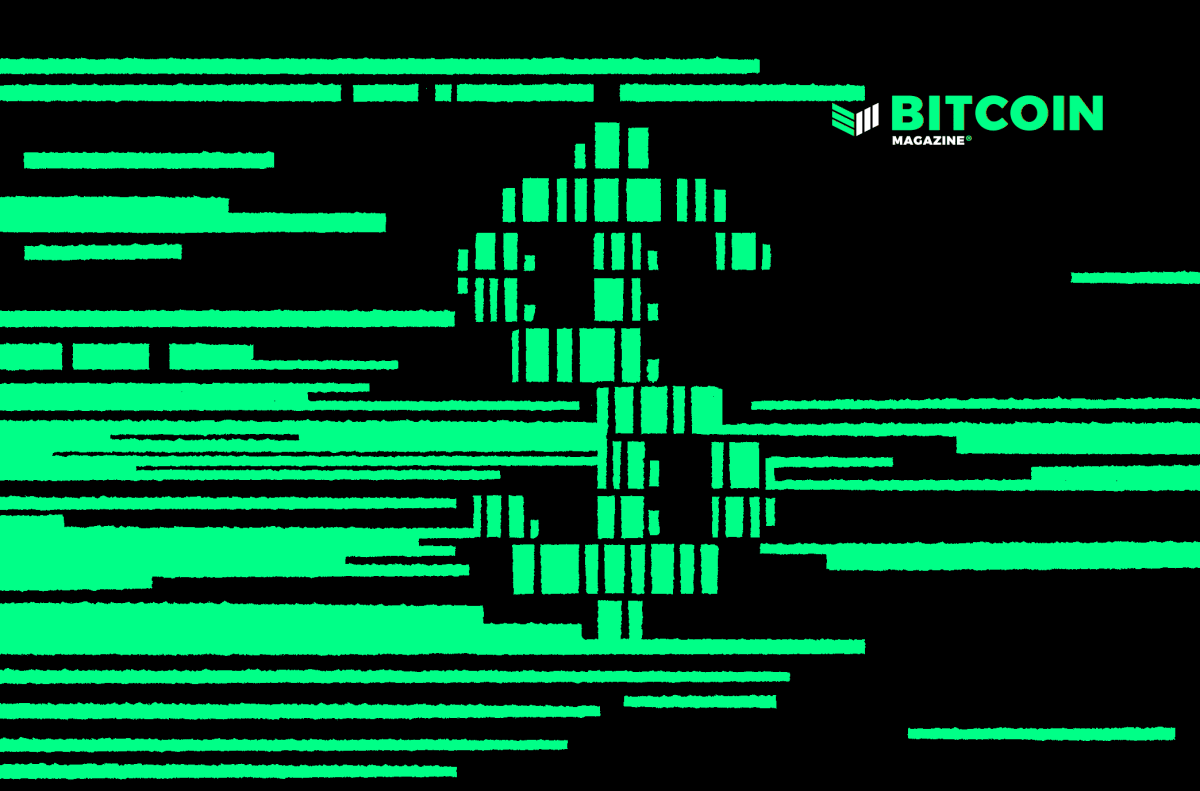Implementing a CBDC would not only negatively impact the U.S. economy, but is literally beyond the capability of the government.
This is an opinion editorial by Shinobi, a self-taught educator in the Bitcoin space and tech-oriented Bitcoin podcast host.
Since the recent White House report on Bitcoin and cryptocurrencies the discussion around a United States central bank digital currency (CBDC) has been raging again. Will they make one? How long will it take? Of course the government is going to take advantage of the broad increases in surveillance capabilities and powers that a CBDC will bring. Right?
Their own report specifically mentions more efficiency as a payments platform, faster cross-border payments, economic growth and stability (easier monetary policy control), protecting against cyber and operational risks (security breaches of financial institutions), safeguarding the privacy of sensitive data and minimizing the risk of illicit financial transactions. So in other words they want to have total insight into your entire financial activity, have the ability to directly deposit money into people’s accounts for stimulus and monetary policy purposes and be able to arbitrarily block „illicit activity,“ which as we know these days is a quickly shifting target that means who knows what next year.
In 2017 your average adult made 41 economic transactions a month, with about 12.4 of them taking place with cash. That would mean looking at these figures that approximately 3,192,200,000 cash transactions occur in the United States each month. To compare with Bitcoin with some napkin math ignoring the efficiencies gained through transaction batching and other optimizations, the Bitcoin blockchain processes somewhere around 3000 transactions a block on average, getting to somewhere in the figure of 13 million transactions a month. So just to replace the average volume of cash transactions alone a CBDC would need to process 246 times more transactions each month than Bitcoin. And that is just replacing cash, not eating into debit or credit card payments, or absorbing some of the payment volume of fintech apps like PayPal and Cashapp.
Such a system would need the kind of uptime that we currently see with payment systems like Visa and Mastercard. Think about how often basic digital government services fail and go offline. Have you ever had a tax year where IRS payment portals did not get overloaded and crash? Does anyone remember the massive debacle of the Obamacare website and constant crashing and failure? Do you really think that the federal government could handle building and maintaining a system independently to facilitate the types of payment volumes necessary to offer a digital alternative to cash without massive failures? What happens when users suffer fund losses? Lose their phones? Things break? Massive companies such as PayPal and major banking institutions who have had years, decades in some cases, building customer support systems to handle such failures and issues regularly drop the ball, take forever to respond to people and drag the entire process out into a long and frustrating ordeal before actually solving the problem. Do you think the federal government could handle such a task? No. Even considering that a realistic possibility is frankly laughable in my mind.
Now let’s look at the financial effects of such a CBDC system eating into the current financial system. The idea ostensibly is to have a system operated by the Federal Reserve (or potentially the Treasury?) that provides financial services and capabilities directly to consumers. That is the role that private banks and financial service providers fill in the economy currently. The Federal Reserve does not offer any directly consumer facing tools or services, they provide accounts to the financial institutions that do so in order for them to hold reserve money with the Federal Reserve and to settle transactions amongst themselves using the Fedwire system. To introduce a CBDC that is directly consumer facing would begin an inevitable disintermediation of these private entities in the financial services market, and given that financial services make up ~7.4% of the U.S. GDP, that process would have a huge implication for the U.S. economy depending on how deeply the CBDC bit into that market. How many people would choose to use a CBDC over Cashapp or PayPal? Over their bank at JP Morgan? If it was a significant amount of people this would have a huge negative effect on the financial sector. Every person who chose to withdraw their money from those institutions and instead hold in a CBDC would be someone pulling their deposits from the bank and leaving them with less reserves to conduct business with.
What about cross-border payments? How would that mechanically work? Connections to legacy systems such as SWIFT? Simply sending the CBDC token directly to someone in a foreign jurisdiction? If you are simply going to use SWIFT or other international transfer systems, how does a CBDC in any way improve the speed of cross-border payments? If you are going to directly facilitate the transfer of the CBDC itself internationally, how do you enforce KYC and AML? Does that not require directly identifying foreign citizens making use of the system? This would result in the expansion of both data collection and direct financial controls of the U.S. government into foreign territories.
So let’s recap: the technical effort to implement a system such as this is immense, and well beyond the capabilities of the government to handle themselves. Deploying such a system would directly eat into private financial companies‘ bottom line, and cause a massive hit to the U.S. economy if successful. Attempting to deploy this as a cross-border payments tool would either make no difference whatsoever, or come with massive political implications in doing so. So what is the reality? An American CBDC as it is predominantly envisioned is just never going to happen. It is completely impractical on a technological level and would usher in a very destructive restructuring of the U.S. financial services sector if adopted at any serious level.
What could actually happen? More of the same. There is no way the U.S. government could actually handle constructing a consumer-facing CBDC system, but companies like PayPal, JP Morgan, Amazon, etc., could very well handle such a system. They have decades of experience in building backend infrastructure for digital systems with a massive user base on the order of the U.S. population, the experience in handling the design of consumer interfaces for such systems and as subpar as it usually is, have experience in managing the types of support infrastructure necessary for helping consumers deal with problems when the system fails to perform as it should.
There will be no Federal Reserve CBDC app directly interfacing with their backend database. There will be, maybe, an overhaul or extension of Fedwire to facilitate companies like PayPal or Chase building private apps and siloed databases connected to Fedwire accounts to easily transfer CBDC „tokens.” In reality probably not even that, an account at Fedwire as it exists right now will be good enough for private companies. Why even go so far as to implement any type of cryptography or token either? If you’re just talking about a database entry in a PayPal system, what is the point of signatures authorizing transactions, custodying your own keys, etc. What benefit does that add? Absolutely nothing. You aren’t self custodying anything, it’s just an entry that PayPal can freeze, delete or refuse to update, exactly like it is now. What’s the big fundamental change? QR Codes. Just a new UI/UX wrapper around more of the same existing fintech payment apps that have existed for almost 20 years now.
There are literally zero benefits in such a system to implementing any of the key primitives of a system like Bitcoin or other cryptocurrencies. Decentralized databases do not scale, that is something that every single Bitcoiner should fundamentally understand when aware of the scaling challenges of Bitcoin. Why introduce such primitives to a „CBDC?“ So people can lose access to their funds easier? To have some compelling narrative you can push on the unsuspecting public? That’s irrelevant, just simply adding a QR code you can scan to send money is fancy and new and fresh to normal people, that’s all you need for your „compelling narrative.“
The entire narrative of CBDCs is nothing but one gigantic misnomer that is slowly being pushed out into the public consciousness to normalize existing digital payment mechanisms as a new norm in place of cash. Nothing is going to change, there will be no stunning new applications or possibilities enabled by „blockchain,“ there will just be flashier and simpler user interfaces and more flexible bank/payment application APIs. There is no fundamental technological breakthrough that is possible or coming with a „CBDC,“ it’s purely a marketing campaign and nothing else.
In reality the question is cash itself — can they push the narrative that we don’t need it anymore? Can they find the means to put such payment apps in the hands of people that do not currently have access to them, particularly the elderly. Can they convince people that cash is unnecessary with such systems available as options in the modern world?
A central bank digital currency is nothing but a meme at the heart of one of the biggest gaslighting campaigns that governments and financial institutions have ever tried to pull on the public at large. Bitcoiners should not humor this campaign in the slightest bit by acting like a CBDC has anything in common with Bitcoin, or any cryptocurrency, by engaging with these pushes and narratives using their language. It is feeding into the manipulation, the gas lighting and the inevitable switcheroo that is coming at the end of all this.
There is no such thing as a CBDC, there is just a shiny new wrapper for fintech apps like PayPal and tighter integration between them and systems like Fedwire.
This is a guest post by Shinobi. Opinions expressed are entirely their own and do not necessarily reflect those of BTC Inc or Bitcoin Magazine.


